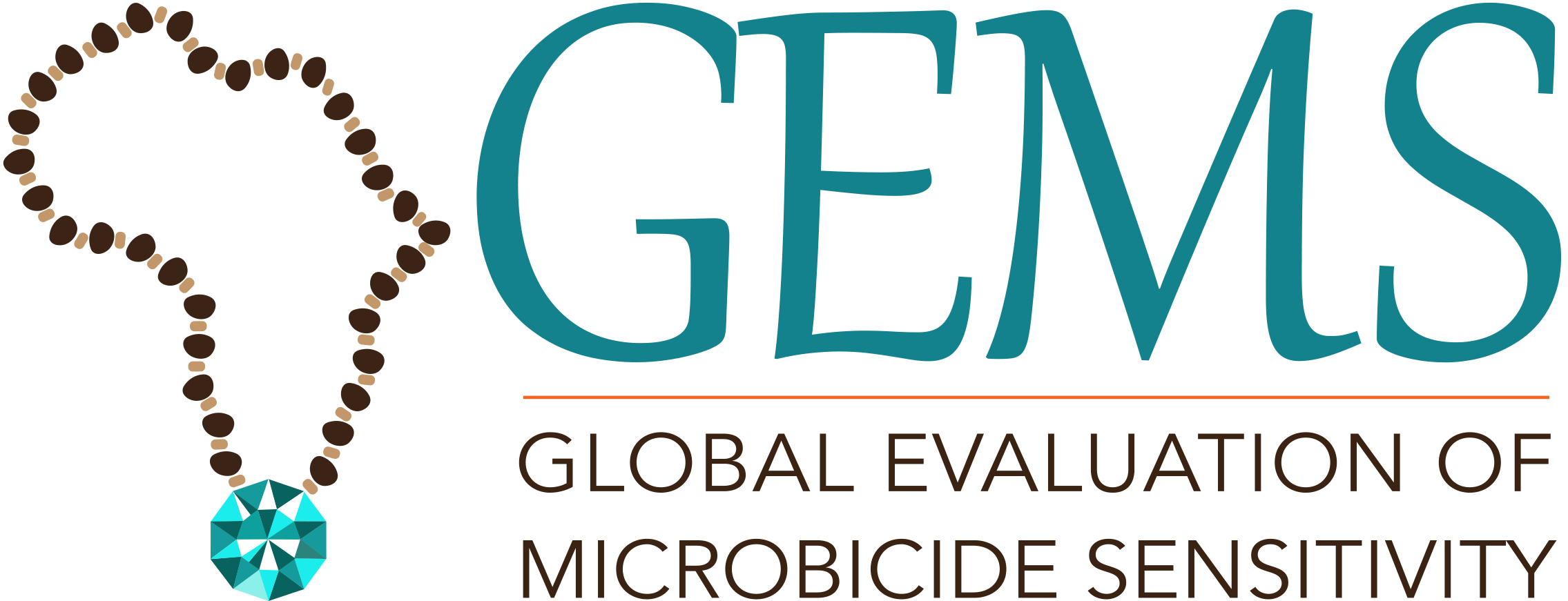GEMS informs policies and defines programmatic considerations related to use of ARV-based HIV prevention products and risk of resistance.
- Collaboration in Kenya and South Africa moves forward.
- Oral PrEP modeling continues.
- Study concept sheets approved.
- Cost-effective strategies for HIV drug resistance surveillance continues.
Collaboration in Kenya and South Africa moves forward. The GEMS team began in-country work in Kenya and South Africa to introduce the GEMS project and establish partnerships. GEMS is working to create mechanisms for providing technical assistance for resistance monitoring in PrEP projects including policy development and the collection of data and samples from clients who seroconvert while using PrEP.
GEMS presented project overviews and discussed oral PrEP rollout plans with the USAID Missions in Nairobi and Pretoria. GEMS met with NASCOP in Kenya and the National Department of Health (NDoH) in South Africa to discuss policy considerations and potential activities related to resistance monitoring within each country. GEMS also met with Bridge to Scale, LVCT Health (Kenya), CHAI, and Wits RHI (South Africa) to discuss logistics for incorporating resistance testing into large-scale oral PrEP projects. Additionally, GEMS assessed resistance testing capacity at key laboratory settings in Kenya and South Africa. Several GEMS team members met one another at BARC-Lancet Laboratories in Johannesburg to discuss sample collection and shipment logistics from clinical sites implementing PrEP.
Oral PrEP modeling continues. GEMS is modeling cost effectiveness of different HIV-testing approaches for people starting and continuing on oral PrEP, as well as on potential use of resistance testing in people who have become infected despite being on oral PrEP. The modeling is initially based on the context of KwaZulu-Natal, and the calibration to data from this province is ongoing.
Study concept sheets approved. Partners PrEP and the Microbicide Trials Network (MTN) approved study concept sheets for GEMS to obtain vaginal swabs from seroconverters to determine if resistance occurred in the genital tract (rather than the plasma) of women who seroconverted on active product. GEMS is in the process of developing an assay to test the samples.
Cost-effective strategies for HIV drug resistance surveillance continues. GEMS is developing cost-effective strategies to improve HIV drug resistance (HIVDR) surveillance during oral PrEP implementation and beyond. The GEMS team is redesigning a newly developed Illumina next-generation sequencing-based HIVDR assay to increase the throughput capacity and improve the ability to detect drug resistance mutations over current genotyping methods. The new assay will reduce both the complexity and financial burden of current surveillance technologies. Current activities are focused on maximizing the amount of HIV RNA extracted from a dried blood spot, modifying the assay to be specific for HIV subtypes common in South Africa and Kenya and identifying steps in the assay that can be simplified for future technology transfer.
No Responses
Leave a Reply

